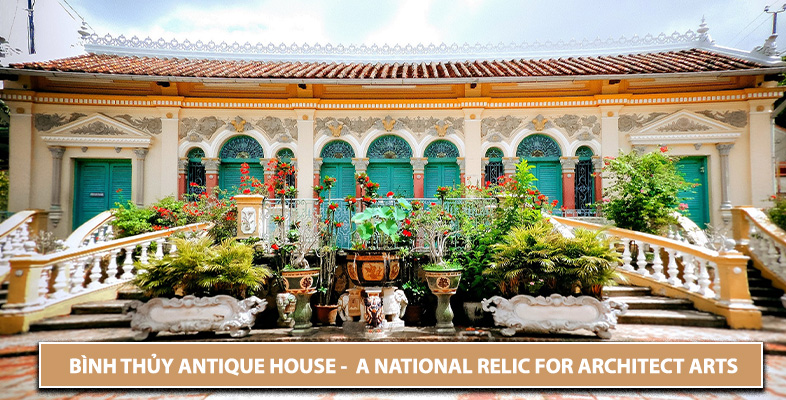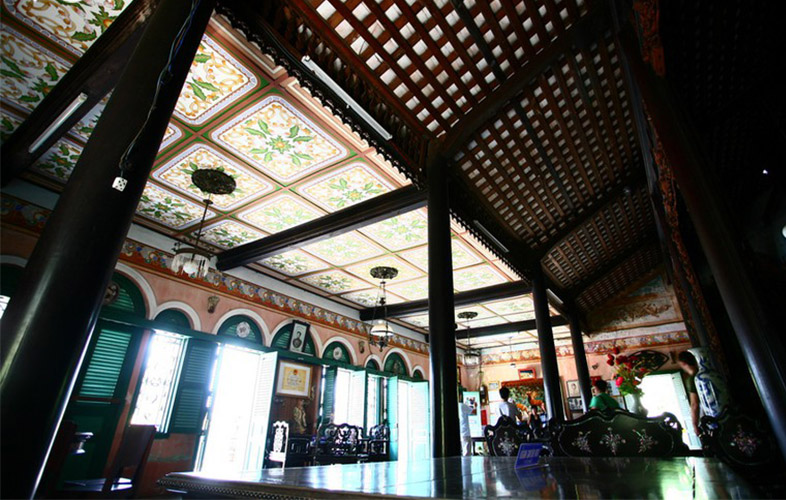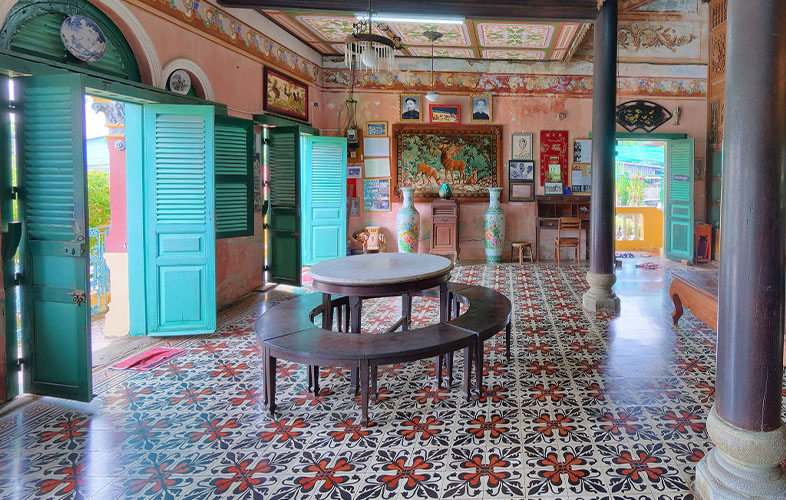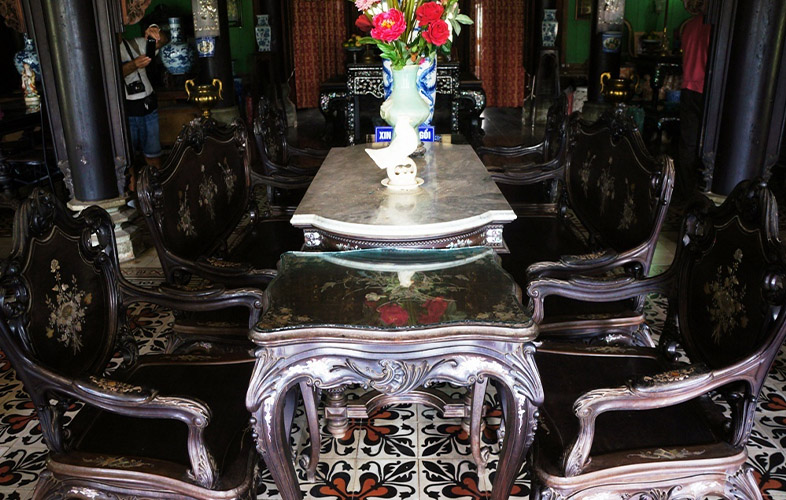
- On 8 August, 2020
- In ALL BLOGS VIỆT NAM BLOGS
- Tags Tags: accient house, antique house, binh thuy house, can tho, cantho, mekong, mekong delta
BÌNH THỦY ANTIQUE HOUSE – A NATIONAL RELIC FOR ARCHITECT ARTS
A construction which has survived the test of time properly shows various alterations throughout its history. Bình Thủy antique house is one such example in the architecture landscape of the South Việt Nam. Excavating each layer of style will reveal an evolution of taste: from an 18th century traditional wooden structure to a Western-style facade in the early 20th century, to Art Decor mosaic details and Modernist lean-to. From architecture to interior, the whole complex shows a blend of styles through time.
From the outside, the house looks Western. Since the facade is a later addition to a traditional wooden structure, common scale in Western architecture sees relative adjustment. The facade is divided into five compartments with Roman vaults, two with pediments. A horseshoe staircase leads to the main hall (a type of stair that comprise of two cursive stairways and a rest in front of the hall). Ornaments are rich but are arranged horizontally, adding up to the overall impression of width. Original color of the facade is unknown, but the house now wears a bright, poly-chromatic look, probably an alteration by the current owners.

Highly contrasted with the bright exterior wall is a dark tone of the interior. This is the original wood structure of the house, which was later adorned with Western wall painting and cement tiles. This contrast of West and East is a character of eclectic houses in the early 20th century.
Carvings are carried out in traditional style: parallel details are divided into squares and filled with ornaments, while pillars are joined by bao-lam vaults which create a sense of depth leading to the worship area.
Reliefs are carved out in various levels; Popping-up high reliefs achieve a three-dimension effect. The background is cut through into geometrical latticework for openness. Skillful blend of details with negative space (empty space behind it) help the whole carving “breathe” while it looks exuberant and meticulous.

One representative example for traditional composition treatment: A broad plane is divided into small squares; each is adorned with an independent ornament. Craftsmen were skillful in arranging squares of different sizes and directions, and of different materials with distinct light effects (here gilded wood, mother-of-pearl and paint on wood); hence created rhythm for the whole plane. In order to break the monotonous repetition of squares, two layers of bao-lam were added. They are uninterrupted, sinus and help direct observation into the main hall. Here, Dong-Tru-Tu-Menh and Phuc-Duc-Chanh-Than are worshiped as luck deities of the family.

Chrysanthemum and rooster – Chrysanthemum unusually team with three other species (apricot, orchid, and bamboo) to form the group of four seasons. When withering, the blossom never drops down but stay in its branch, which makes it the best choice for describing an unbreakable man. A rooster stands for chivalry. Together, the form a pair of still-and-moving hero.
Cedrus and deer – Two methods of sense making are applied in this carving. Metaphor on characteristics: cedrus is a plant that lives for long, hence a symbol for longevity. Deer in Classical Chinese (Lộc) is homophone to fortunate (Lộc). The pair conveys a wish for health and wealth that everyone yearns for in their life.

Inscription is applied on the final surface for small details like fur or leaf veins. Pay attention to the devotion of the craftsman in his care for whorls and tender expression of the deer.
The bottom layer of each carving is a latticework, here Asian swastika is present. These negative spaces create openness for the carvings even when they are highly meticulous.

Cement tiles are made of white and grey cement. The technique does not require baking, therefore increases the productivity of tile making. Cement tiles became a common commodity and proved to be affordable to the rising middle class of the time. A more detailed article will further discuss this kind of tile.

Louis XV set – After the stressful absolute reign of Louis XV, under his successor – Louis XV, furniture became lighter, more cheerful and centered on comfort of users. At that time, the high Baroque era had gave away to a delightful and meticulous Rococo.
The table set in Bình Thủy antique house is a typical example for mid-Louis XV style in the South of Việt Nam. The long curved legs contrast with the heavy form of the previous style. Leaf carvings accentuating every angle are characteristic of Rococo. Mother-of-pearl is a traditional Vietnamese technique which helps blend the set to the traditional whole of the house.

In 1986, the house was chosen as filming location for the movie “The Lover”, an adaptation from the acclaimed novel L’Amant by Marguerite Duras. The movie was directed by Jean-Jacques Annaud. Leading roles were played by Jean March and Tony Leung Ka-fai. The success of the movie help put the house in the map as one of the most famous vernacular houses of Mekong Delta.
Cre: Tan Man Kien Truc – Photos: internet